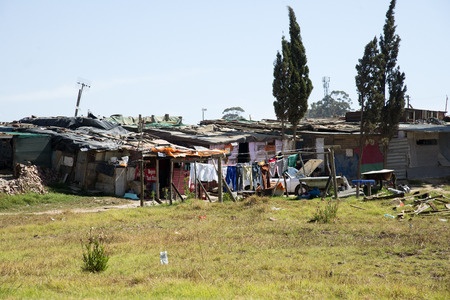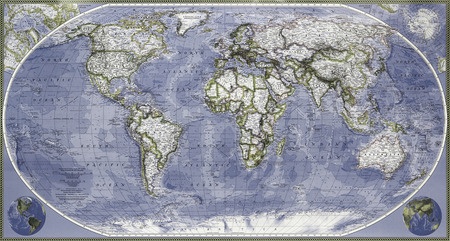A multiplicity of actors, a lack of coordination
Official development assistance (ODA) in sub-Saharan Africa mobilizes many actors:
Multilateral donors (World Bank, IMF, European Union, United Nations, regional development banks) alone represent 30 % of public aid,
Bilateral aid, managed by States,
The NGOs are extremely varied, ranging from large international structures like Oxfam or Care to small local associations.
Yet, no serious coordination exists — and is not even considered — between these actors. Each acts according to its own interests: political, economic, ideological or strategic. Sub-Saharan Africa then becomes a mirror of ideological clashes global: between social democracy in the French-speaking world and extreme liberalism in countries like Zambia where access to public schools is paid.
A field of growing influences and inequalities
During my 13 years of missions for NGOs and the European Commission in sub-Saharan Africa, I was able to see from my first visits to what extent these power struggles between external operators, all officially committed to development, contributed:
has the worsening of poverty populations,
and to the enrichment of local political elites.
Effectiveness in question after 60 years of aid
Official development assistance has taken place in four major historical phases, and we are entering a fifth. Yet, despite 60 years of efforts, poverty remains widespread. In 2005, more than half of the world's population still lived in poverty, or more than 3 billion individuals.
The international crises of 2008 only served to aggravate this situation, particularly for the most vulnerable. It is therefore legitimate to question the real effectiveness of ODA in the fight against poverty and inequality.
National interests on the East-West axis emerge
Historically, ODA was based on a north-south axis : developed countries of the North financed projects in developing countries of the South. This logic, defined by the Bretton Woods institutions (World Bank, IMF), was dominated by the five major post-war powers (United States, Japan, Germany, France, United Kingdom).
Today, this axis is silently questioned. A new east-west axis emerges, from China to Brazil, via Africa. It is based on more direct, equal-to-equal economic relations, without the neocolonial legacy that still weighs on North-South relations. This does not cancel the old rules, but superimposed to new dynamics.
Aid diverted: corruption and collapse of social indicators
In resource-rich African countries, there is a bidding war between governments to sell itself to the highest bidder. International aid then becomes a lever of corruption, and not a development tool.
Social indicators such as education and health are deteriorating, despite significant aid flows. In sub-Saharan Africa:
THE poverty rate has not decreased for 25 years (approximately 50 %),
The number of people living on less than 0.70 $/day has increased from 200 to 380 million,
By 2015, one-third of the world's one billion poor will live in this region.
Three major challenges identified
The difficulties of ODA in sub-Saharan Africa are numerous, but well known:
National interests, which bias financing choices,
The lack of experience of some lessors, causing additional costs (e.g. the European Union),
Lack of coordination, often voluntary.
Levers for action: awareness, integration, coordination
In light of this observation, three lines of thought must be explored:
1. Raising the level of consciousness
Development aid should be targeted humanists, such as reducing inequalities by the redistribution of wealth (money, knowledge, resources). But this remains a distant ideal.
A more realistic goal would be to aim for a greater political, economic and social equality, in a logic of stability. Because without action, social tensions will only increase, slowing down global growth. Nation states could be forced to give up some of their power to ensure social peace and maintain access to markets.
It is also possible that the nation-state is no longer the right level of interventionBelow, the regions; above, international organizations. These two levels could better transcend national interests, which often generate conflicts.
2. Strengthening international and local integration
Globally, emerging countries must be better integrated And more represented in international institutions (UN, IMF, World Bank). This implies a in-depth reform : more democracy, transparency, simplification and political arbitration systems.
At the local level, a balance remains to be found between the political sensitivities And direct access to aid for populations. Innovations are emerging, such as systems of e-governance (Tunisia, Burkina Faso, Benin), allowing more active participation of citizens in local decisions.
These two forms of integration converge towards a better transparency, both internationally and locally.
3. Organize real coordination
Coordination between development actors is crucial to:
Reduce costs by pooling distribution systems via more democratic and independent international organizations,
Integrating NGOs, which operate closer to the populations and according to principles that are often more agile than multilateral agencies.
Some NGOs have a real know-how and deserve to be fully integrated into aid strategies, provided that monitoring and evaluation mechanisms independent are put in place (audits, external evaluations).
Conclusion: a changing world to be structured together
The world is no more complex than it was yesterday — it is more visible, more connected, more awareIndividuals have access to more knowledge, create more connections, and organize themselves differently. This gives the impression of growing chaos.
But this chaos is also the breeding ground for a new order, new rules of the game. It is up to us, development actors, decision-makers, citizens, to shape this emerging world, with lucidity, responsibility and vision.


